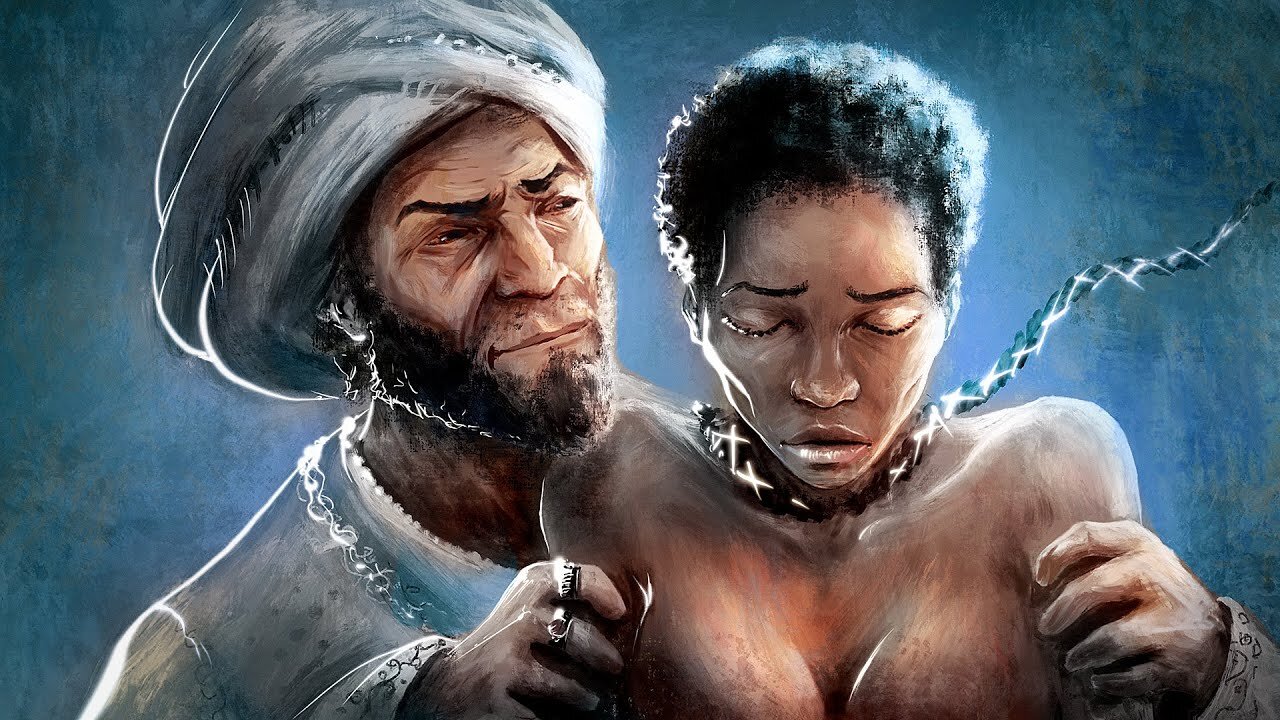Premium Only Content

The Slave Trade Mainstream Media Hates To Talk About
The Sahara is the world’s largest desert and crossing it is only possible thanks to scattered oases that provide life-sustaining water to travelers along the way. For those untrained in handling it, the Sahara is a place of death and despair.
This was certainly true for millions of slaves who were dragged in chains across that burning desert for a thousand years. This Trans-Saharan Slave Trade is easily overlooked thanks to its more famous Atlantic cousin, but the exchange of unfree people across the desert was a longer lasting and possibly larger system that deserves much ore attention.
Today on A Day In History we look at the brutality of the Trans-Saharan Slave Trade and how this institution of slavery and suffering stood for over a thousand years. Don’t forget to live and subscribe to keep up with more videos on historical topics like this one.
Origins of Trans-Saharan Slave Trade
Slavery within and around the Sahara is as ancient as civilization. Ancient Egyptians extracted slaves from adjacent regions in modern day Sudan and Libya. Later, Phoenician settlers along the fertile Mediterranean Coast, most notably Carthage, established slave trading networks that included slaves taken from all areas of the Mediterranean Basin.
But the scattered inhabitants of the Sahara could not satisfy the growing demand for slaves forever. Eventually, traders began using the Sahara as a passageway to access and enslave the people of Sub-Saharan Africa.
Historians are unsure who began the trans-Saharan slave trade or when. Herodotus writing in the 5th century BC described a people called the Garamentenes from Libya who allegedly used their chariots to hunt down Ethiopian slaves, and some historians say they were the first trans-Saharan slavers. However, there is no material evidence of these vast slave trading networks and it’s more likely these were just slave raids deepers into the Sahara and not a true trans-Saharan slave trading system.
Small numbers of Sub-Saharan Africa slaves existed in Roman North Africa by the 300s. Artwork recovered from Roman villas shows figures who seem to be Black Africans working in fields and hunting, showing that at least some slave trading across the desert existed by this point. However, it wasn’t until the arrival of Islam and the Arabs to North Africa that a larger sustained system of slave trading emerged.
Describing the Trans-Saharan Slave Trade
Arab armies conquered most of North Africa by the early 8th century. The unified ‘Abbasid Caliphate connected the Islamic world religiously and economically, and slaves would soon move along these connections. Like every major contemporary society, the Islamic world had a great need for slaves, and quickly found that the rural berbers of North Africa were not enough to satisfy the demands of their interconnected world. In time, they would also become suppliers to Christian Europe as well.
#transsaharanslavetrade #slavery #history
Music: Epidemic music
Sources:
Keith Bradley, ‘Apuleius and the Sub-Saharan Slave Trade’, Apuleius and Antonine Rome: Historical Essays, (2012)
Matthew S. Gordan, ‘Slavery in the Islamic Middle East (c.600-1000 CE)’, in C. Perry et al, Cambridge World History of Slavery Volume II: AD 500 - AD 1420, (2021)
Ralph Austen, Trans-Saharan Africa in World History, (2010)
Ralph Austen, ‘Regional Study: Trans-Saharan Trade’, in The Cambridge World History Volume 4: A World with States, Empires and Networks 1200 BCE-900 CE, (2018)
Ronald Segal, Islam’s Black Slaves: The Other Black Diaspora, (2001)
-
 12:37
12:37
A Day In History
1 year ago $0.06 earnedThis Slave Owner Did Things Beyond Human Comprehension
317 -
 3:03:51
3:03:51
FreshandFit
8 hours agoShe BRAGGED About Her ABORTIONS?!
68.4K82 -
 1:45:26
1:45:26
Kim Iversen
13 hours agoBANNED for Telling the Truth: The 9/11 and Epstein Plot They Don't Want You To Hear
125K149 -
 1:08:47
1:08:47
Man in America
15 hours agoDr. Makis EXPOSES Big Pharma’s SICK Vaccine Scam—RFK Jr. Must Act NOW!
104K35 -
 1:28:21
1:28:21
Glenn Greenwald
13 hours agoRFK Jr. Hearing Reveals DC Pro-Pharma Consensus; Trump's Executive Order to Deport Student Protesters Criticizing Israel; Untangling DC Think Tank Funding & Influence | SYSTEM UPDATE #399
151K171 -
 1:23:44
1:23:44
Space Ice
14 hours agoSpace Ice & Redeye: Van Damme's The Quest: Pirates, Clowns, James Bond & Bloodsport
49.6K3 -
 59:57
59:57
The StoneZONE with Roger Stone
11 hours agoJ6 Martyr Enrique Tarrio Describes Inhumane Prison Conditions Ordered by Biden | The StoneZONE
47.4K4 -
 16:48
16:48
Tundra Tactical
11 hours ago $9.65 earnedAffordable Medical Gear From ACETAC SHOT Show 2025
84.8K4 -
 1:46:16
1:46:16
Redacted News
14 hours agoRFK CONFIRMATION: Kennedy goes to WAR with Big Pharma Democrats in Fiery Hearing | Redacted Live
264K433 -
 57:31
57:31
Candace Show Podcast
14 hours agoBREAKING! Taylor Swift Turns Against Blake Lively & Ryan Reynolds | Candace Ep 141
241K179